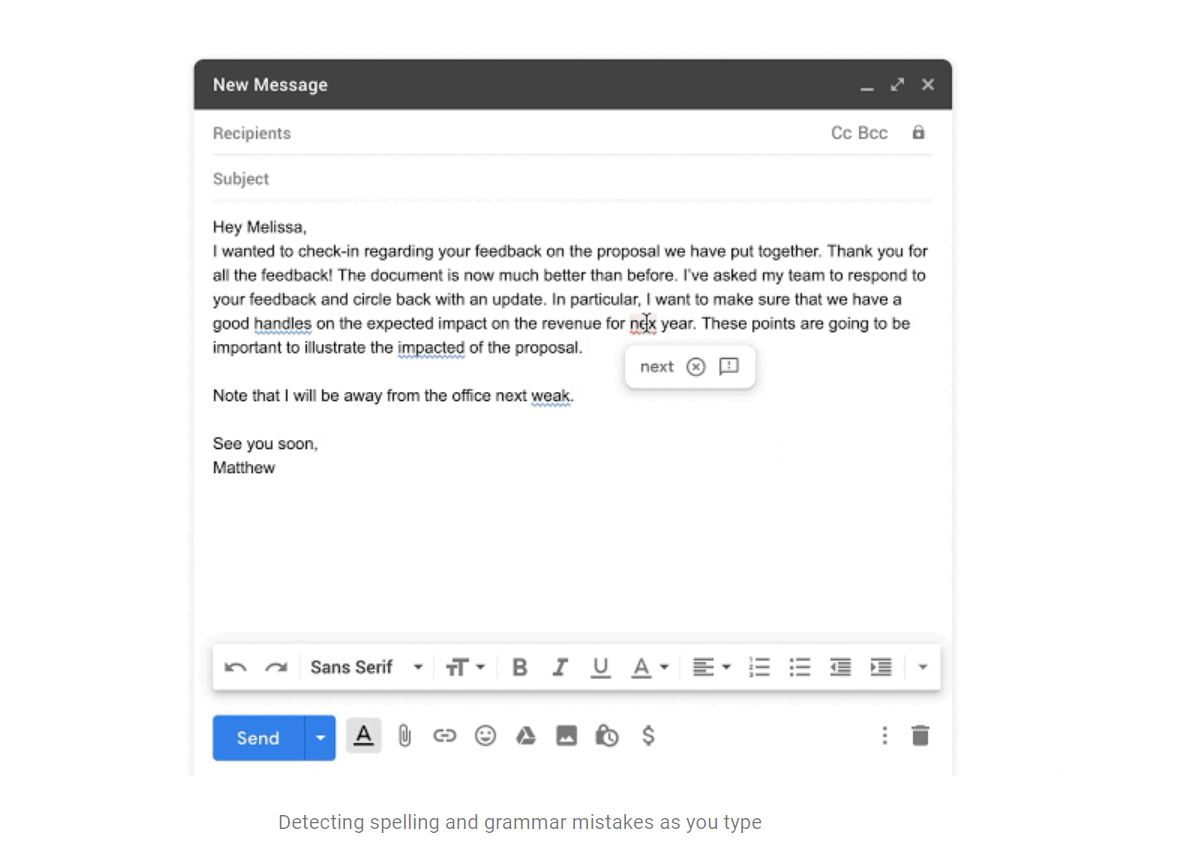
Nothing is more embarrassing than sending an important email, only to realize that is had been littered with typos.
Well, Google is now out to help. The company recently announced that its Gmail email service now sports auto-correct for common spelling mistakes, as well as automatic detection for grammar-related issues.
The features will be turned on by default, and no action will be required on your behalf to receive it on your account. Once it is available for you, you’ll see two visual cues in your draft Gmail messages for spelling and grammar mistakes.
Grammar issues will be highlighted in a squiggly blue line, and you’ll be able to choose a new suggestion by clicking it. For auto-corrections, the change will be temporarily highlighted in red, and you’ll be free to undo it if you want.
“These capabilities can also help you write and edit with more confidence if you’re a non-native speaker. With our A.I.-first approach, you can communicate smarter and faster, without sweating the small stuff,” Google said.
The grammar corrections are all powered by artificial intelligence and machine learning. It had previously available in Google Docs and can help fix issues with fix verb tenses and common mistakes like “your” and “you’re.”
“Spelling and grammar suggestions are powered by machine learning. As language understanding models use billions of common phrases and sentences to automatically learn about the world,” Google said.
As convenient as it can be, the feature might not be for everyone, as there could be privacy and other concerns. Google mentions to Gmail users that since the feature examines “billions of common phrases” human cognitive biases might be reflected in some corrections. The company is aware of this and says the conversation around this is “ongoing.”
“Google is committed to making products that work well for everyone, and are actively researching unintended bias and mitigation strategies,” Google said.
Gmail users who don’t want the improved spell-check and grammar correction capabilities can turn it off by heading to Gmail settings. To do so, users can head to Settings, General and then turn off Grammar, Spelling, and Autocorrect. Otherwise, a browser extension like Grammarly could be another alternative for solving issues with spelling and grammar in emails.
Editors' Recommendations
- 5 email apps you should use instead of Gmail or Outlook
- 10 helpful Gmail tips and tricks everyone should know
- Chrome is making a key change to protect you from phishing
- I turned my face into a game controller, and you can too
- Google just made this vital Gmail security tool completely free


